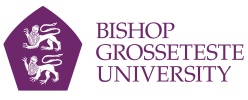Is Lennie a monster? A reconsideration of Steinbeck’s Of Mice and Men in a 21st century inclusive classroom context
Lawrence, C. (2020) Is Lennie a monster? A reconsideration of Steinbeck’s Of Mice and Men in a 21st century inclusive classroom context. Palgrave Communications, 6 (17). ISSN 2055-1045
|
Text
Lawrence_is lennie a_2020.pdf - Published Version Available under License Creative Commons Attribution. Download (628kB) | Preview |
Abstract
Of Mice and Men remains a staple text in schools in both the United States and United Kingdom, where both neuro-typical and disabled pupils encounter it. The character of Lennie has learning difficulties and also – as identified by some researchers – exhibits many characteristics of autism. Although the novella is hailed as a modern classic, there are aspects in Steinbeck’s portrayal of Lennie as un-human, ‘othered’ from the other characters in the book and demonised as animal-like that merit challenge if they are to be encountered in the modern classroom. This study asks, ‘If Lennie is a monster, what does that mean for pupils’ understanding of autism and intellectual disability both inside and outside the classroom?’ It considers the portrayal of Lennie from within its origins in the Eugenics movement of the 1930s, the effect of reader sympathies with George in the final action of the book and the moral effect of the ‘Briseño’ factor, used in Texas to decide on a prisoner’s suitability to face the death penalty. The importance of teachers’ awareness of disability issues and language when teaching texts of this kind and of the positioning of texts within the disability awareness curriculum is discussed.
| Item Type: | Article |
|---|---|
| Additional Information: | © The Author 2020. This article is licensed under a Creative Commons Attribution 4.0 International License, which permits use, sharing, adaptation, distribution and reproduction in any medium or format, as long as you give appropriate credit to the original author(s) and the source, provide a link to the Creative Commons license, and indicate if changes were made. The images or other third party material in this article are included in the article’s Creative Commons license, unless indicated otherwise in a credit line to the material. If material is not included in the article’s Creative Commons license and your intended use is not permitted by statutory regulation or exceeds the permitted use, you will need to obtain permission directly from the copyright holder. To view a copy of this license, visit http://creativecommons.org/ licenses/by/4.0/. |
| Divisions: | School of Teacher Development |
| Depositing User: | Clare Lawrence |
| Date Deposited: | 08 Jan 2020 12:04 |
| Last Modified: | 03 Feb 2020 17:04 |
| URI: | https://bgro.repository.guildhe.ac.uk/id/eprint/677 |
Actions (login required)
 |
Edit Item |

